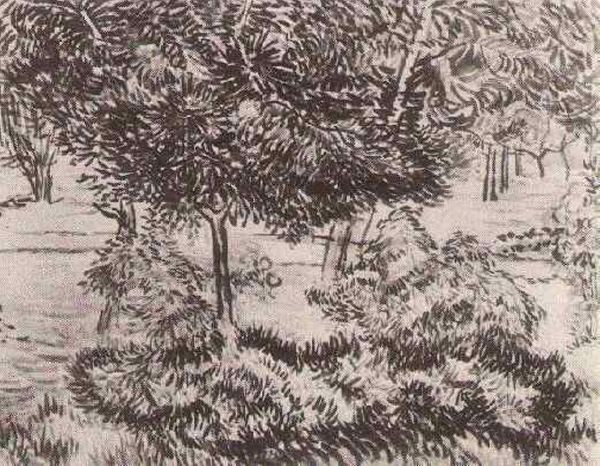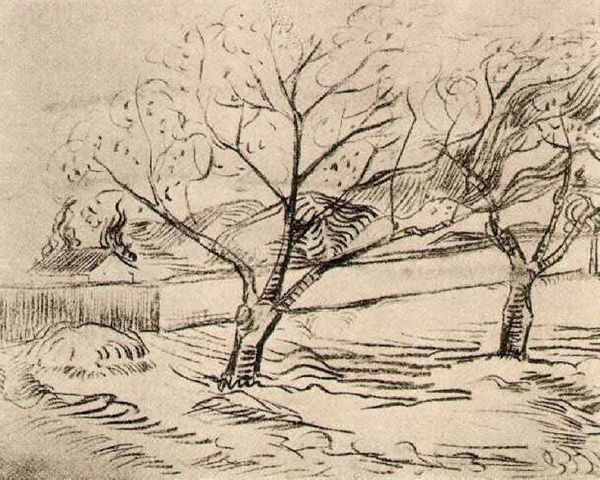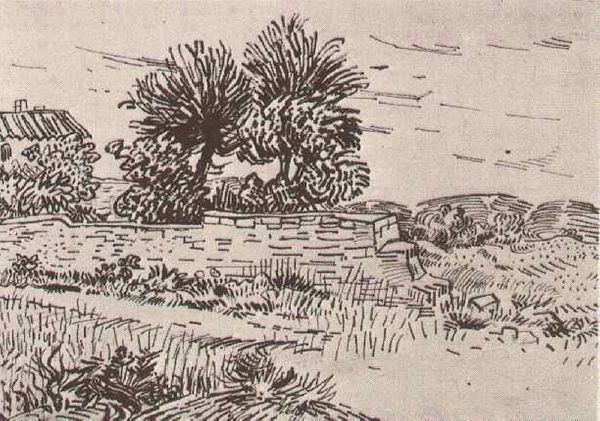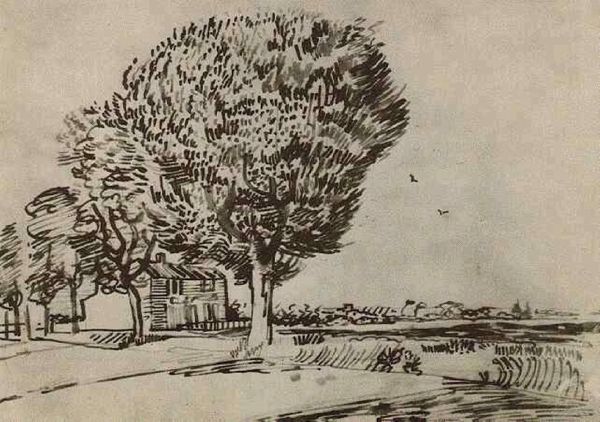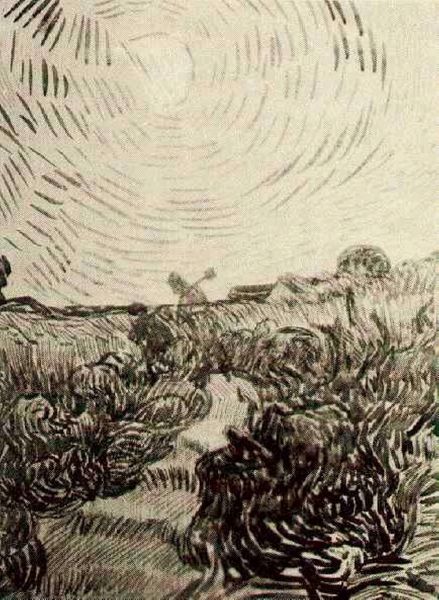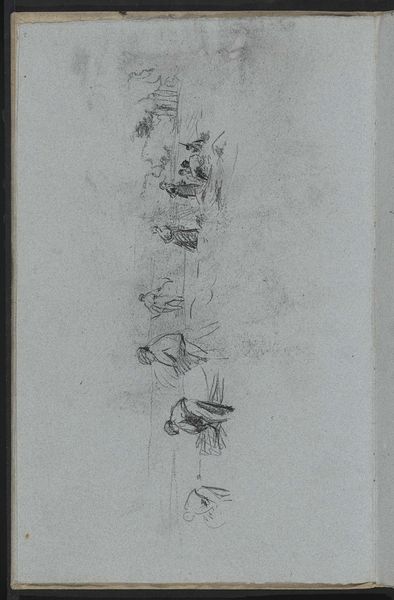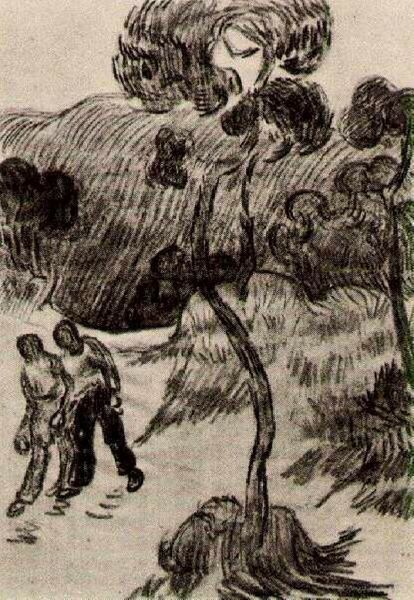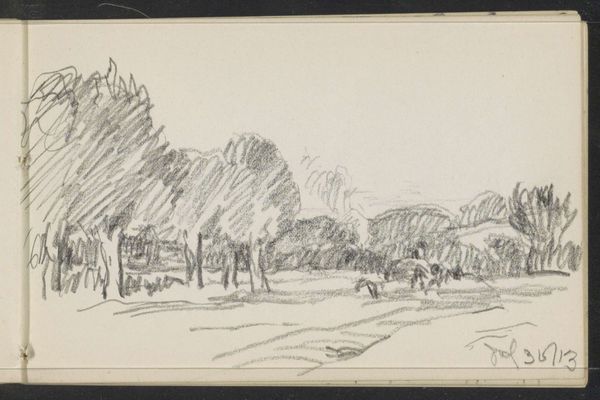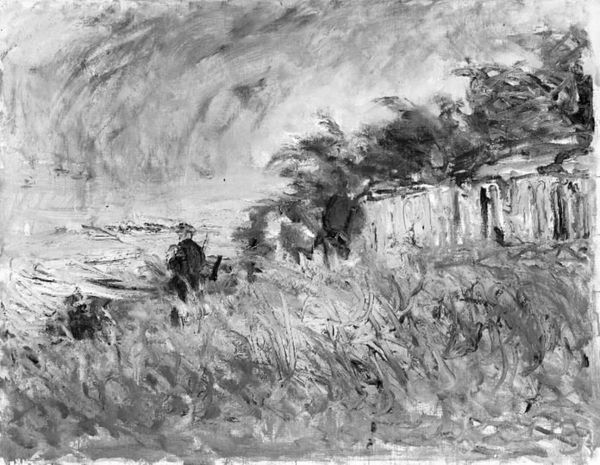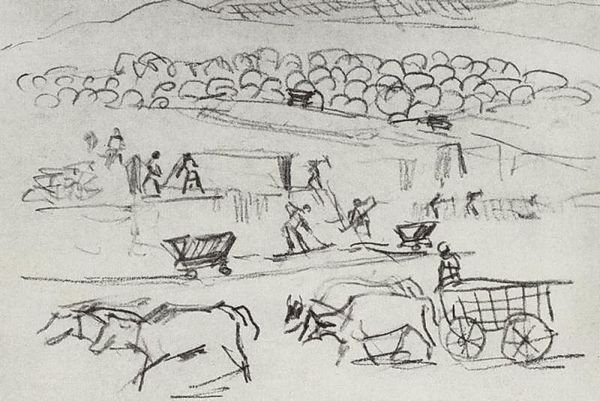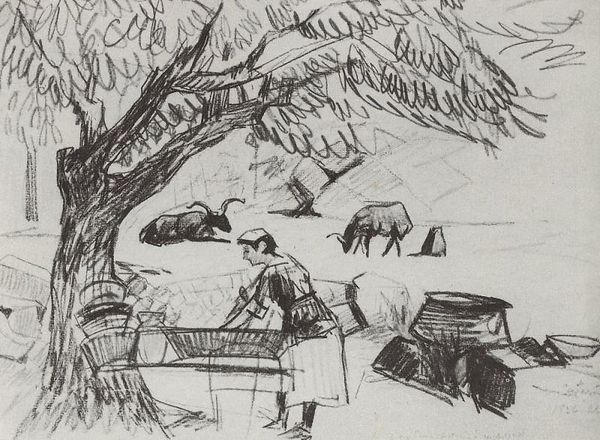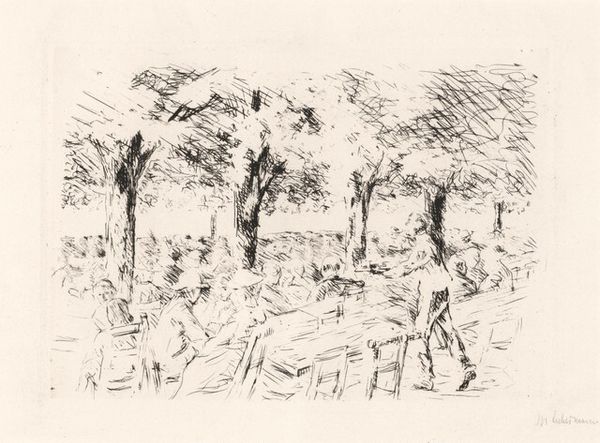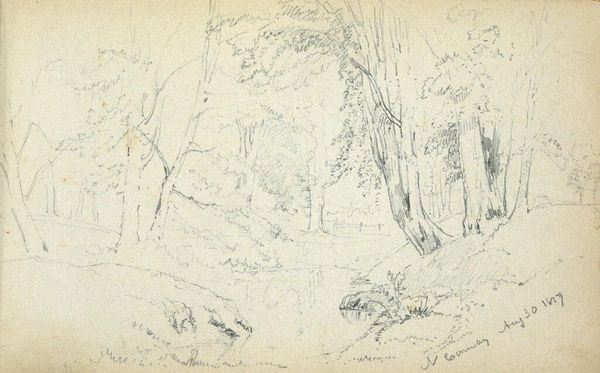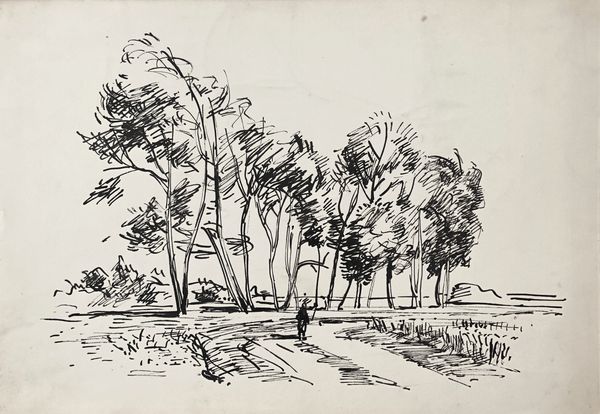
drawing, pencil
#
drawing
#
impressionism
#
landscape
#
figuration
#
pencil
Copyright: Public domain
Editor: Here we have "A Lane in the Public Garden with Benches," a pencil drawing made by Vincent van Gogh in 1888. It’s a busy scene but also feels quiet… what do you see in this piece? Curator: It’s fascinating how Van Gogh uses this public space. A park, typically a haven for all, but rendered here with a certain… distance? Note how the figures are delineated – they’re present, but detached. This prompts questions about public versus private life, particularly in the burgeoning modern era Van Gogh was navigating. Does everyone truly have access to rest and leisure? Editor: That makes me wonder about the benches themselves. Who are they *really* for? Curator: Precisely! We must examine these supposed sites of communal relaxation through a critical lens. Consider the societal context: class divisions, gender expectations… Van Gogh’s loose, gestural strokes could be interpreted as highlighting the instability of these social structures. Are these park-goers relaxing, or are they performing leisure? Editor: Performing leisure… I hadn't considered that. It makes me rethink the figures; they suddenly seem less at ease. Curator: Right? The artist's distinctive mark-making feels almost like a form of social commentary. His impressionistic approach is not just about capturing light, but also revealing the social realities of the time, don't you agree? Editor: Definitely! I see the layers of meaning that come from studying art in its social and political context. I never thought about Van Gogh this way. Curator: Art is always in dialogue with society. By recognizing this, we expand our understanding of both art and ourselves.
Comments
No comments
Be the first to comment and join the conversation on the ultimate creative platform.
